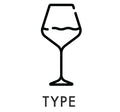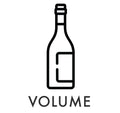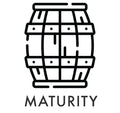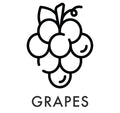Paul Jaboulet Aine Hermitage Maison Bleue 2018 750ml










The Wine Advocate | RP 934
Published: May 13, 2021
Drink: 2021-2035
Sourced from the eastern portion of the hillside, the 2018 Hermitage La Maison Bleue is earthy, welcoming and open with hints of crushed stone accenting red raspberries and vanilla. Full-bodied and lush, with a creamy texture, it's approachable young, yet still powerful, rich and long on the finish. I'd expect it to close down over the next couple of years, then reemerge and blossom after 2025 or so.
When I spoke with her via Zoom in mid-December, Caroline Frey was candid in discussing her COVID-19 experience. "I was thinking, ‘I'm young. I do a lot of sports,’” she said, assuming that even if she caught it, she wouldn't be hugely affected. But when she contracted the virus, she lost her sense of smell, and she said it was just starting to come back as we tasted through the 2018s and 2019s from Paul Jaboulet Aîné.
According to Frey, in 2018, the vineyards received plenty of rain from March through June, followed by dry, windy conditions, which kept the vines healthy. Harvest began on August 27th and extended through September 25th. "There's something powerful and pure in 2018," she said. "It's a mix of ’15 (power) and ’16 (purity)." Referencing the 2018 Domaine de Thalabert, Frey said, "We have the power and density but not like ’03. The wine is still bringing freshness and balance."
The 2019 season was characterized by a cool spring and a slow start to the growing season, but that was followed by intense heat, including 10 days of temperatures that exceeded 40 degrees Celsius (104 degrees Fahrenheit). A major hailstorm struck Crozes-Hermitage in mid-June, leading to extensive crop losses (up to 60%, according to Frey), followed by another, smaller hail event in July that affected parts of Hermitage and Saint-Joseph. Despite those storms, parts of the vineyards still experienced hydric stress, so picking didn't begin until September 11 and concluded on September 27. "We had smaller berries and thicker skins than in 2018," she said. "We did a very soft extraction—more like an infusion. When we have these levels of richness, we imagine the finish may be unbalanced, but that's not the case. We have length and freshness."
Both of these vintages are hugely successful at Jaboulet, no doubt because of the team's ability to deal with the hot, dry conditions. As Frey said, "The biggest challenge is to have the ripeness from the vines and not just the sun." All of the wines—including the substantial volumes of the Côtes du Rhône Parallele 45—have now been certified organic (produced from organically grown grapes as defined by U.S. terms, as sulfur is added), with the estate wines being grown biodynamically since 2015. Because they are made in the same facility as some non-biodynamically grown wines, they're not certified for the time being.

